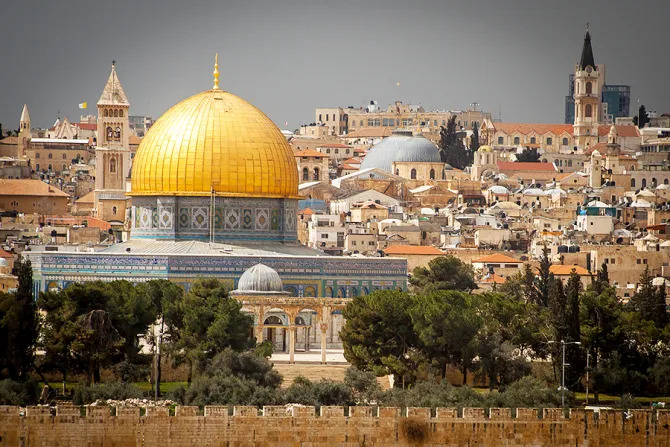Israel’s war against Hamas, which began when the terrorist group launched a surprise attack on Israel Oct. 7, continued to rage throughout October and November before an extended truce began this week, though fighting is expected to resume.
The human toll of the war has been catastrophic. The day of Hamas’ attack was the deadliest day for Israel since it became a state, with over 700 killed, according to government officials. Meanwhile, the Hamas-controlled Gaza Health Ministry has decried what it tallies to be some 12,000 deaths in Gaza amid Israel’s retaliation.
In addition, the fighting has caused immense physical damage, especially in Gaza. A recent New York Times analysis of satellite imagery found that about half of all buildings in the northern Gaza Strip have been damaged or destroyed since the start of the war.
Christians around the world have visited the Holy Land for hundreds of years, seeking God’s favor as they walk in the holy places where Christ and other biblical figures stood. Many Christians are understandably worried that the holy sites that have been guarded for centuries as places of pilgrimage might be damaged or even destroyed amid the chaos of war.
According to Reuters, Hamas possesses rockets that are capable of a 150-mile range, though with limited accuracy. Although these rockets could theoretically make reach holy sites in Jerusalem and beyond, Israel’s vaunted “Iron Dome” missile defense system has historically intercepted most rocket attacks from Gaza. Rocket attacks have also been reported coming from the north, launched by the Iran-backed Lebanese group Hezbollah, a Hamas ally.
In the face of this uncertainty, what is the outlook for the Holy Land’s many precious sites?
To find out, CNA contacted the Franciscan Custody of the Holy Land, which has maintained the holy places of Christianity in the region for more than 800 years. In 1342, Pope Clement VI gave the Franciscans the official mandate to be guardians of the holy places for the Catholic Church.
Today, the Franciscans care for 65 of the most significant Holy Land sites, including Bethlehem’s Basilica of the Nativity, the Garden of Gethsemane, and Jerusalem’s Basilica of the Holy Sepulchre, the traditional site of Jesus’ death and resurrection. The bulk of the sites span across Israel and the Palestinian Territories, while a few are located in present-day Syria, Lebanon, Jordan, and Egypt.
Father David Grenier, OFM, is commissary of the Holy Land for the United States, meaning he is responsible for promoting the Holy Land’s sites to the people of the U.S. He said this week that none of the sites under the Franciscans’ care are currently under threat from the war — at least directly from hazards like bombs or rockets.
“So far, we are blessed because there’s no direct threat from the war,” Grenier told CNA in an interview.
“[T]here’s no direct threat from the bombing or the rockets that are being thrown. We must say that we’re lucky we haven’t had any of our shrines damaged, or at risk to be damaged.”
Instead, he said, the threat facing holy sites in the region is more intangible — a lack of financial support from international pilgrims. The normally steady supply of tour groups from the U.S. and elsewhere has largely dried up as pilgrimage organizations anxiously wait to see how the war will play out.
In a place like Bethlehem, which is located in the Palestinian-controlled West Bank, Grenier said some 90% of the Christians living there are doing work that is directly tied to catering to pilgrimage groups — working in restaurants, hotels, souvenir shops, as guides, or in the shrines themselves.
The lockdowns and restrictions amid the COVID-19 pandemic hit these workers hard for several years, he noted, and now the normally bustling streets of Jerusalem are empty once more. The ongoing war has even forced the cancellation of public Christmas celebrations in the town of Jesus’ birth.
“It was planned to be a record year for the number of pilgrims, and with Christmas coming … the people, they feel discouraged. They cannot work,” Grenier said.
“A lot of people at the moment are thinking about leaving,” he continued.
By Jonah McKeown






